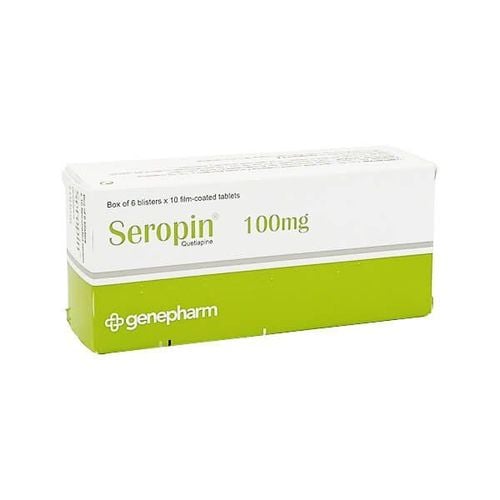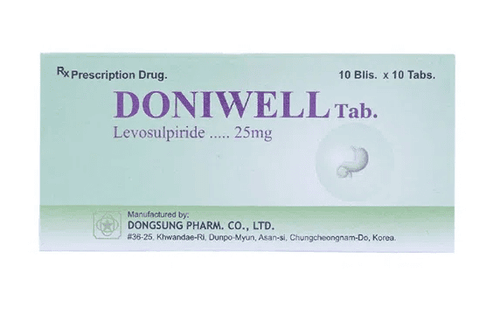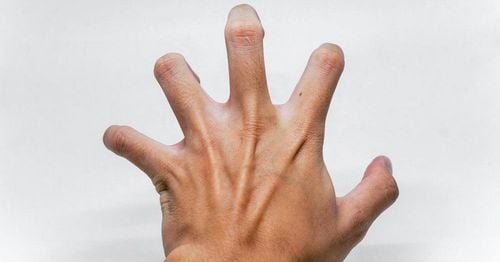This is an automatically translated article.
Multiple sclerosis causes damage to the central nervous system that affects the health of the patient. Although there is still no specific cure for this disease, making early diagnosis will help treat the symptoms of the disease, thereby improving the disease leading to a better quality of life.
1. Subjects susceptible to multiple sclerosis (MS)
Multiple sclerosis (MS) presents as a chronic inflammatory disease of the central nervous system (CNS), which includes the brain, spinal cord, and optic nerve. In people with multiple sclerosis, the immune system mistakenly attacks myelin, which coats and protects nerve fibers. The damaged myelin forms scar tissue, or damage, which in turn creates a communication gap between the brain and the rest of the body. Nerves themselves can also be damaged, and in severe cases permanent damage can occur.
Multiple sclerosis can develop at any age. However, multiple sclerosis is more common in women than in men, and is also more common in whites than in Hispanics or Africans, and is therefore quite rare in people of Asian and other ethnic groups. other ethnicities. The first symptoms of multiple sclerosis tend to appear between the ages of 20 and 50. For young adults, multiple sclerosis can be classed as the most common disabling neurological disease.
2. Most recent diagnostic criteria
For a doctor to make a diagnosis, you must find evidence of multiple sclerosis MS in at least two distinct areas of the central nervous system (CNS). The effect of symptoms must occur at discrete times.
According to an update made in 2017, multiple sclerosis MS can be diagnosed based on the following findings:
Two attacks or symptom flare-ups can last for at least 24 hours with 30 days between episodes attack and accompanied by two injuries. Two attacks, one damage and evidence propagate through space or another attack on another part of the nervous system. One attack, two lesions, and evidence of spread in a timely manner or finding a new lesion in the same location since the previous examination, or the presence of immunoglobulins - oligoclonal bands in the spinal fluid live An attack, along with a lesion and evidence of its spread in space and time Symptoms or lesions that get worse and are common in space are found in two of the following following: MRI of the brain, MRI of the spine and spinal fluid. Multiple sclerosis MRI will be done with and without contrast to locate the lesion and highlight active inflammation.
Spinal fluid is examined for proteins and associated inflammatory cells, but not always found in people with multiple sclerosis. Spinal fluid can also help rule out other diseases and infections.
The doctor can also order potentials to be elicited. Previously, sensory and auditory brainstem potentials have been used. Current diagnostic criteria include only visually suggestive potentials. During this test, your doctor will analyze how your brain responds to the alternating checkerboard pattern.
3. Early Symptoms of MS
Lesions can form anywhere in the CNS. Symptoms depend on which nerve fibers are affected. The initial symptoms of multiple sclerosis are usually mild and transient. These early symptoms may include: double or blurred vision, numbness, tingling or burning sensation in the limbs, trunk or face, muscle weakness, stiffness or spasms, dizziness, urgency to urinate... These symptoms can be caused by any condition, so your doctor may order an MRI to help make an accurate diagnosis.
Some common symptoms of MS are often unpredictable. Although you can never have more than one type of MS at a time, the diagnosis can change over time. There are 4 main types of multiple sclerosis:
Clinically isolated syndrome (CIS) single case of CNS inflammation and demyelination lasting 24 hours or more. CIS may be the first episode of MS or a single episode of demyelination. Some people with CIS eventually develop other types of MS, but many do not. Relapsing-remitting multiple sclerosis (RRMS). According to the National Multiple Sclerosis Association, about 85% of people with MS initially diagnosed with relapsing sclerosis go into remission of RRMS. And RRMS is associated with well-defined relapses in which neurological symptoms worsen. Recurrence lasts from a few days to several months. Relapse episodes are followed by partial or complete remission, where symptoms are milder or absent. There was no disease progression during remission. Primary progressive multiple sclerosis (PPMS). In primary progressive multiple sclerosis (PPMS), there is a decline in neurological function at the onset. There was also no apparent recurrence or remission. The National Multiple Sclerosis Society estimates that about 15% of people with multiple sclerosis MS have this type when they are diagnosed. With this condition there may also be periods of increased or decreased disease activity as symptoms worsen or improve. Primary progressive multiple sclerosis PPMS works when there is evidence of new disease activity. Progressive PPMS means the disease gets worse over time.
Secondary progressive multiple sclerosis. When RRMS turns to advanced MS, the condition is called secondary progressive multiple sclerosis (SPMS). During this process, the disease gradually becomes more advanced, with or without recurrence.
4. Treatment of Multiple Sclerosis
In the case of specific patients with multiple sclerosis, each person's treatments will also be different. People with multiple sclerosis often work with a neurologist to find the right treatments. Multiple sclerosis treatments can be divided into three main categories:
Disease-modifying therapies (DMTs). Most of these drugs are designed to reduce the frequency and severity of relapses and slow the progression of relapsing MS. The Food and Drug Administration (FDA) has only approved DMT for the treatment of primary progressive multiple sclerosis (PPMS). There is no approved DMT for the management of advanced multiple sclerosis secondary to SPMS. Interferon beta injection (Avonex, Betaseron, Extavia, Plegridy, Rebif). Side effects such as liver damage can occur, so you need regular blood tests to monitor your liver enzymes. Other side effects may include injection site reactions and flu-like symptoms.
Glatiramer acetate (Copaxone, Glatopa). Side effects include injection site reactions. However, in some cases more serious reactions including chest pain, heart palpitations, breathing or skin reactions may occur.
Oral medication
Dimethyl fumarate (Tecfidera). Possible side effects with Tecfidera use include flushing, nausea, diarrhea, and a decreased white blood cell count (WBC).
Fingolimod (Gilenya). Side effects may include slowed heart rate, so the patient's heart rate must be carefully monitored after the first dose. In addition, the drug can also cause high blood pressure, headaches, and blurred vision. Liver damage is considered a possible side effect, so you will need blood tests to monitor your liver function.
Teriflunomide (Aubagio). Possible side effects include hair loss and liver damage. Common side effects include headache, diarrhea, and a stinging sensation on the skin. The drug can also harm a developing fetus.
Infusion
Alemtuzumab (Lemtrada). This medicine may increase your risk of infections and autoimmune disorders. Medicines are usually used only when there is no reaction to other medications. This medicine can have serious side effects on the kidneys, thyroid, and skin.
Mitoxantrone hydrochloride (generic form only). This medication should only be used for very severe multiple sclerosis MS. And drugs can damage the heart and have been linked to blood cancers.
Natalizumab (Tysabri). This medicine increases the risk of progressive multifocal encephalopathy (PML), a rare viral brain infection.
Ocrelizumab (Ocrevus). This medication is used to treat PPMS as well as RRMS. Side effects include infusion reactions, flu-like symptoms, and infections such as PML.
Treatment of flare-ups
Flare-ups can be treated with oral or intravenous corticosteroids, such as prednisone (Prednisone Intensol, Rayos) and methylprednisolone (Medrol). These drugs help reduce inflammation. Side effects may include increased blood pressure, fluid retention, and mood swings.
If the patient's symptoms are severe and unresponsive to steroids, plasma (plasma) exchange may be selected. During this procedure, the liquid part of the patient's blood is separated from the blood cells. This blood is then mixed with a protein solution (albumin) and returned to the body.
In addition, the patient may be treated for symptoms. These symptoms include: bladder or bowel dysfunction, fatigue, muscle stiffness and spasms, sexual dysfunction... Physical therapy and exercise can improve problems. on strength, flexibility, and gait of the patient. In addition, complementary therapies including massage, meditation and yoga can be performed.
Although, there is no cure for multiple sclerosis MS, nor is there a reliable way to assess progress in an individual. Some people will experience mild symptoms that do not lead to disability. Others may progress more and the disability increases. Therefore, treatment by controlling symptoms helps patients improve their current health status. Many people living with multiple sclerosis MS also find and learn how to function well. Therefore, early diagnosis of multiple sclerosis and early treatment can be key to maintaining a person's health.
Vinmec International General Hospital has treated patients with multiple sclerosis with autologous hematopoietic stem cell transplantation. Transfusion of autologous hematopoietic stem cells is an attempt to "reboot" the immune system, whose job it is to destroy damage to the brain and spinal cord in multiple sclerosis. For autologous stem cell infusions to treat disease, hematopoietic stem cells are taken from your body (autologous transfusion) from your bone marrow or blood, selected and stored before exhausting your immune system. translated by chemicals. The stored hematopoietic stem cells are then passed back to the body. The new stem cells travel down to the bone marrow and over time restore the immune system.
Please dial HOTLINE for more information or register for an appointment HERE. Download MyVinmec app to make appointments faster and to manage your bookings easily.













